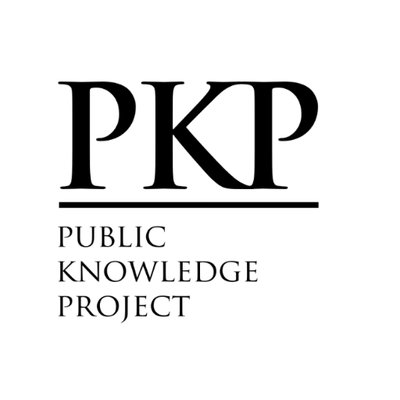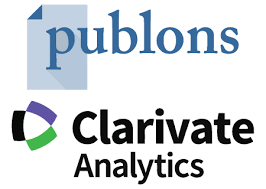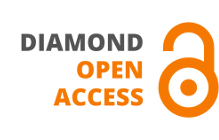L' impact de la pandémie de COVID-19 sur la relation entre les facteurs d'incertitude, les biais comportementaux des investisseurs et la réaction boursière des Fintech américaines
DOI :
https://doi.org/10.59051/joaf.v13i1.557Mots-clés :
Fintech ; COVID-19 ; facteurs d'incertitudes; biais comportementaux des investisseurs, réaction des marchés boursiers, méthode des moindres carrés ordinairesRésumé
Objectif : Le but de l’étude est d’identifier l’impact de la pandémie COVID-19 sur la relation entre les facteurs d’incertitudes (volatilité des marchés boursiers -maladies infectieuses, incertitude de la politique économique et le stress financier) et les biais comportementaux des investisseurs (le comportement grégaire, l’aversion aux pertes, la comptabilité mentale et l’excès de confiance) avec les rendements anormaux du marché Américain de la Fintech.
Méthode : Pour parvenir à cet objectif, cet article fait recours au test de cointégration de Johensen, test de causalité de Granger et méthode des moindres carrés ordinaires pour la période allant du 16 Juillet 2016 au 31 décembre 2021.
Résultats : Les résultats obtenus démontrent qu’il existe une relation à long terme entre les variables étudiées avant et durant la période de la pandémie COVID-19. En fait, ces résultats indiquent que cette pandémie est une source cruciale pour résulter des rendements anormaux dans le marché boursier américain de la Fintech. En particulier, pendant l’épidémie de COVID-19, le marché Fintech a sous-réagi au signal commun de stress financier. De plus, les biais comportementaux, en particulier l'excès de confiance et le comportement grégaire, ont un effet positif sur la réaction anormale du marché boursier américain de la Fintech, comparativement à la période avant COVID-19.
Originalité/ Pertinence: Cette étude est l'une des rares études qui ont comparé l’effet des biais comportementaux et des facteurs d'incertitude sur la réaction du marché américain de la Fintech avant et pendant la pandémie COVID-19.
Téléchargements
Références
Abbes, M.B. and Trichilli, Y., 2015. Islamic stock markets and potential diversification benefits. Borsa Istanbul Review, 15(2), pp.93-105.
Adel, B., Mariem, T. (2013). The impact of Overconfidence on Investors Decisions. Business and economic Research, vol. 3, n°. 2.
Ahmad, Z., Ibrahim, H., Tuyon, J. (2017). Behavior of fund managers in Malaysian investment management industry. Qualitative Research in Financial Markets, Vol. 9 No. 3, pp. 205-239.
Apostolakis, G. N., Floros, C., Gkillas, K., Wohar, M. (2021). Financial stress, economic policy uncertainty, and oil price uncertainty. Energy Economics, Elsevier, vol. 104(C).
Aysan, A.F., Khan, A.U.I. and Topuz, H. (2021). Bitcoin and altcoins price dependency: Resilience and portfolio allocation in COVID-19 outbreak. Risks, 9(4), p.74.
Azimli, A. (2020). The impact of COVID-19 on the degree of dependence and structure of risk-return relationship: a quantile regression approach. Finance Res Lett. 101648.
Bagliano, F.C., Morana, C. (2014). Determinants of US financial fragility conditions. Research in International Business and Finance, 30, 377392.
Bai, L., Wei, Y., Wei, G., Li, X., Zhang, S. (2020). Infectious disease pandemic and permanent volatility of international stock markets: a long-term perspective. Financ Res Lett.
Baker, S.R., Bloom, N., Davis, S.J. (2016). Measuring economic policy uncertainty. Q J Econ 131:1593–1636.
Baker, S., Bloom, N., Davis, S.J., Kost, K. (2019). Policy News and Equity Market Volatility. NBER working paper 25720.
Baker, S., Bloom, N., Davis, D, J., Kost, K., Sammon, M., Viratyosin, T. (2020). The Unprecedented Stock Market Reaction to COVID-19. Covid Economics: Vetted and Real-Time Papers 1, 3 April.
Barberis, N., Huang, M and Santos, T. (2001). Prospect Theory and Asset Prices. Quarterly Journal of Economics, 116, p. 1-53.
Barberis, N., Huang, M. (2001). Mental Accounting, Loss Aversion, and Individual Stock Returns. The Journal of Finance. 56, (4), p. 1247-1292.
Balcilar, M., Gupta, R., Kim, W.J., Kyei, C. (2019). The role of economic policy uncertainties in predicting stock returns and their volatility for Hong Kong, Malaysia and South Korea. International Review of Economics and Finance, 59, 150–163.
BenSaïda, A., Jlassi, M., Litimi, H. (2015). Volume–herding interaction in the American market. American Journal of Finance and Accounting, 4(1), 50-69.
BenSaïda, A., (2017). Herding effect on idiosyncratic volatility in U.S. industries. Finance Research Letters, Volume 23, pp. 121-132.
Bouri, E., Shahzad, S., Roubaud, D., Kristoufek, L., Lucey, B. (2020). Bitcoin, gold, and commodities as safe havens for stocks: new insight through wavelet analysis. The Quarterly Review of Economics and Finance, Elsevier, vol. 77(C), pages 156-164.
Boussaidi, R. (2020). Implications of the overconfidence bias in presence of private information: Evidence from MENA stock markets. International Journal of Finance & Economics. Wiley, ISSN 1099-1158, ZDB-ID 1493204-0. - 2020 (30.11.)
Brogaard, J., Detzel, A. (2015). The asset-pricing implications of government economic policy uncertainty. Management Science 61 : 3–18.
Chang, C. L., McAleer, M., Wang, Y.A. (2020). Herding behaviour in energy stock markets during the Global Financial Crisis, SARS, and ongoing COVID-19. Renewable and Sustainable Energy Reviews, 134, 110349.
Chiang, T.C., (2022). Evidence of economic policy uncertainty and COVID-19 pandemic on global stock returns. Journal of Risk and Financial Management, 15(1), p.28.
Christou, C., Gupta, R. (2020). Forecasting equity premium in a panel of OECD countries: The role of economic policy uncertainty. The Quarterly Review of Economics and Finance, 76(C), 243-248.
Choi, S.Y. (2020). Industry volatility and economic uncertainty due to the COVID-19 pandemic: Evidence from wavelet coherence analysis. Finance Research Letters, Elsevier, vol. 37(C).
Choi, K.H., Yoon, S.M. (2020). Investor sentiment and herding behavior in the Korean stock market International Journal of Financial Studies, 8 (2) (2020), p. 34.
Daniel, K., Hirshleifer, D. (2015). Overconfident Investors, Predictable Returns, and Excessive Trading. Journal of Economic Perspectives29 (4): 61-88.
Dai, P.F., Xiong, X., Liu, Z., Huynh, T.L.D. and Sun, J. (2021), “Preventing crash in stock market: the role of economic policy uncertainty during COVID-19”, Financial Innovation, Vol. 7 No. 1, pp. 1-15.
De Bondt, W. F. M., Thaler, R. H. (1985). Does the stock market overreact? Journal of finance. 40, 793-808.
Doviak, P. (2016). How to Incorporate Behavioral Finance Theory into a Planning Practice. Journal of Financial Planning 28, 3, pp. 30-32.
Easley, D., L. Yang. (2015). Loss Aversion, Survival, and Asset Prices. Journal of Economic Theory 160, 494–516.
Fei, T., Liu, X. (2021). Herding and market volatility. International Review of Financial Analysis, Elsevier, vol. 78(C).
Gkillas, K., Gupta, R., Pierdzioch, C. (2020). Forecasting realized oil-price volatility: The role of financial stress and asymmetric loss. Journal of International Money and Finance, Elsevier, vol. 104(C).
Granger, C. W. J. (1969). Investigating Causal Relations by Econometric Models and Cross-Spectral Methods. Econometrica, 37, 424-438.
Hakkio, C. and Keeton, W.R. (2009) Financial Stress: What Is It, How Can It Be Measured, and Why Does It Matter? Economic Review, 2, 5-50.
Haroon, O., Rizvi, S. A. R. (2020). COVID-19: Media coverage and financial markets behavior—A sectoral inquiry. Journal of Behavioral and Experimental Finance, 27, 100343.
Hilliard, J., Zhang, H. (2015). Size and price-to-book effects: Evidence from the Chinese stock markets. Pacific-Basin Finance Journal, Elsevier, vol. 32(C), pages 40-55.
Hu, Z., Du, D., Du, Y. (2018). Generalized polynomial chaos-based uncertainty quantification and propagation in multi-scale modeling of cardiac electrophysiology. Comput. Biol. Med. 102, 57–74.
Jana, R.K., Ghosh, I., Goyal, V., (2022). Spillover nexus of financial stress during black Swan events. Finance Research Letters, 48, p.102892.
Jarque, C.M. and Bera, A.K. (1987) A Test for Normality of Observations and Regression Residuals. International Statistical Review, 55, 163-172.
Jia, X., Li, M. (2015). An index of financial safety of China. Journal of Industrial Engineering and Management, 8(2), 579-597.
Johansen, S. (1995). Likelihood-Based Inference in Cointegrated Vector Autoregressive Models (New York: Oxford University Press).
Jordan, B., Miller, T., Dolvin, S. (2015). Fundamentals of investments: Valuation and management. New York, NY: McGraw-Hill Education.
Kahneman, D., Tversky, A. (1982). The psychology of preferences. Scientific American, 246(1), 160–173.
Kevin, L. K., Douglas, C.S. (2010). Measuring financial market stress. Economic Synopses, Federal Reserve Bank of St. Louis.
Kuranchie-Pong, R., Forson, J. A. (2021). Overconfidence bias and stock market volatility in Ghana: testing the rationality of investors in the Covid-19 era. African Journal of Economic and Management Studies ; ahead-of-print(ahead-of-print):15, 2021.
Lee, I., Shin, Y. J. (2018). Fintech : Ecosystem, business models, investment decisions, and challenges. Business Horizons, 61(1), 35 – 46
Litimi, H., BenSaïda, A. & Bouraoui, O., (2016). Herding and excessive risk in the American stock market: A sectoral analysis. Research in International Business and Finance, Volume 38, pp. 6-21.
Li, X. M., Peng, L. (2017). US Economic Policy Uncertainty and Co-Movements between Chinese and US Stock Markets. Economic Modelling, 61, 27-39.
Liu, R., Chen, J., Wen, F. (2021). The nonlinear effect of oil price shocks on financial stress: Evidence from China. The North American Journal of Economics and Finance, Elsevier, vol. 55(C).
MacKinnon, J.G., Haug, A.A., Michelis, L. (1999). Numerical Distribution Functions of Likelihood Ratio Tests for Cointegration. Journal of Applied Econometrics, 14, 563-577.
Matkovskyy, R., Bouraoui, T., Hammami, H. (2016). Analysing the financial strength of Tunisia: An approach to estimate an index of financial safety. Research in International Business and Finance, 38, 485-493.
Matkovskyy, R., Jalan, A., Dowling, M. (2020). Effects of economic policy uncertainty shocks on the interdependence between Bitcoin and traditional financial markets. The Quarterly Review of Economics and Finance.
Metwally, A. H., Darwish, O. (2015). Evidence of the overconfidence bias in the Egyptian stock market in different market states. The Business & Management Review, 6(4), 178.
Mushinada, V.N.C., Veluri, V.S.S. (2018). Investors overconfidence behaviour at Bombay Stock Exchange. International Journal of Managerial Finance, Emerald Group Publishing, vol. 14(5), pages 613-632, October.
Mushinada, V. (2020). Are individual investors irrational or adaptive to market dynamics?. Journal of Behavioral and Experimental Finance, Elsevier, vol. 25(C).
Nair, V.R., Antony, A. (2015). Evolution and challenges of Behavioral Finance. International journal of science and Reaserch, 4(3):1055-1059.
Ozili, P. K., Arun, T. (2020). Spillover of COVID-19: impact on the global economy. SSRN Electr. J. 1–27.
Schell, D., Wang, M., Huynh, T.L.D. (2020). This time is indeed different: a study on global market reactions to public health crisis. J Behav Exp Finance 100349.
Sindreu, J. (2020) Why Covid-19 won’t stop the new Shadow banks. Wall Street J. A.
Souissi, F., Trichilli, Y., Boujelbène-Abbes, M. (2020). Googling investor's sentiment, financial stress and dynamics of European market indexes: a Markov chain analysis. International Journal of Bonds and Derivatives, 4(2), pp.152-178.
Tariq, B., Ullah, N. (2013). Investor Overconfidence and Stock Returns: Evidence from Pakistan. IOSR Journal of Business and Management, 8(1), 77-84.
Thirikwa, G. M., Olweny, T. (2015). Determinants of herding in the Nairobi securities exchange. Economics and Finance Review 4(05).
Trichilli, Y., Abdelhédi, M., Boujelbène Abbes, M. (2018). Googling investor’s sentiment: powerful measure in conventional and Islamic MENA financial markets. International Economic Journal, 32(3), pp.454-469.
Trichilli, Y., Abbes, M.B. and Masmoudi, A., (2020). Islamic and conventional portfolios optimization under investor sentiment states: Bayesian vs Markowitz portfolio analysis. Research in International Business and Finance, 51, p.101071.
Trichilli, Y., Abbes, M.B., Masmoudi, A. (2020). Predicting the effect of Googling investor sentiment on Islamic stock market returns: A five-state hidden Markov model. International Journal of Islamic and Middle Eastern Finance and Management.
Trichilli, Y., Abdelhédi, M., Boujelbène Abbes, M. (2020). The thermal optimal path model: Does Google search queries help to predict dynamic relationship between investor’s sentiment and indexes returns?. Journal of asset management, 21(3), pp.261-279.
Trichilli, Y., Abbes, M.B., Zouari, S. (2020). The impact of political instability driven by the Tunisian revolution on the relationship between Google search queries index and financial market dynamics. Journal of Capital Markets Studies.
Trichilli, Y., Kharrat, H., Boujelbène Abbes, M. (2021). Prospect theory and risk-taking behavior: an empirical investigation of Islamic and conventional banks. Journal of Asset Management, 22(3), pp.163-178.
Trichilli, Y., Abbes, M.B. (2022). The impact of COVID-19 on the portfolio optimization. EuroMed Journal of Business.
Wu, G., Yang, B., Zhao, N. (2020). Herding Behavior in Chinese Stock Markets during COVID-19. Emerging Markets Finance and Trade, Taylor & Francis Journals, vol. 56(15), pages 3578-3587, December
Yang, L. (2019). Loss Aversion in Financial Markets. Journal of Mechanism and Institution Design, 2019, 4(1), 119 –137.
Youssef, M., Mokni, K., Ajmi, A.N. (2021). Dynamic connectedness between stock markets in the presence of the COVID-19 pandemic: does economic policy uncertainty matter? Financ Innov 7(1):1–27.
Yu, X., Huang, Y. (2021). The impact of economic policy uncertainty on stock volatility: Evidence from GARCH–MIDAS approach. Physica A: Statistical Mechanics and its Applications, Elsevier, vol. 570(C).
Téléchargements
Publié-e
Comment citer
Numéro
Rubrique
Licence
(c) Tous droits réservés Oumayma Gharbi, Mouna Boujelbene, Yousra Trichili 2022

Cette œuvre est sous licence Creative Commons Attribution - Pas d'Utilisation Commerciale - Pas de Modification 4.0 International.
Les auteurs qui publient dans cette revue acceptent les termes suivants :
- Les auteurs conservent le droit d'auteur et accordent à la revue le droit de première publication, l'ouvrage étant alors disponible simultanément, sous la licence Licence d’attribution Creative Commons permettant à d'autres de partager l'ouvrage tout en en reconnaissant la paternité et la publication initiale dans cette revue.
- Les auteurs peuvent conclure des ententes contractuelles additionnelles et séparées pour la diffusion non exclusive de la version imprimée de l'ouvrage par la revue (par ex., le dépôt institutionnel ou la publication dans un livre), accompagné d'une mention reconnaissant sa publication initiale dans cette revue.
- Les auteurs ont le droit et sont encouragés à publier leur ouvrage en ligne (par ex., dans un dépôt institutionnel ou sur le site Web d'une institution) avant et pendant le processus de soumission, car cela peut mener à des échanges fructueux ainsi qu'à un nombre plus important, plus rapidement, de références à l’ouvrage publié (Voir The Effect of Open Access).






















